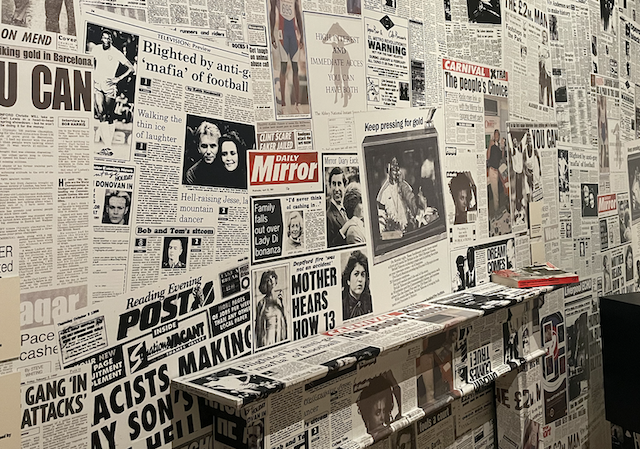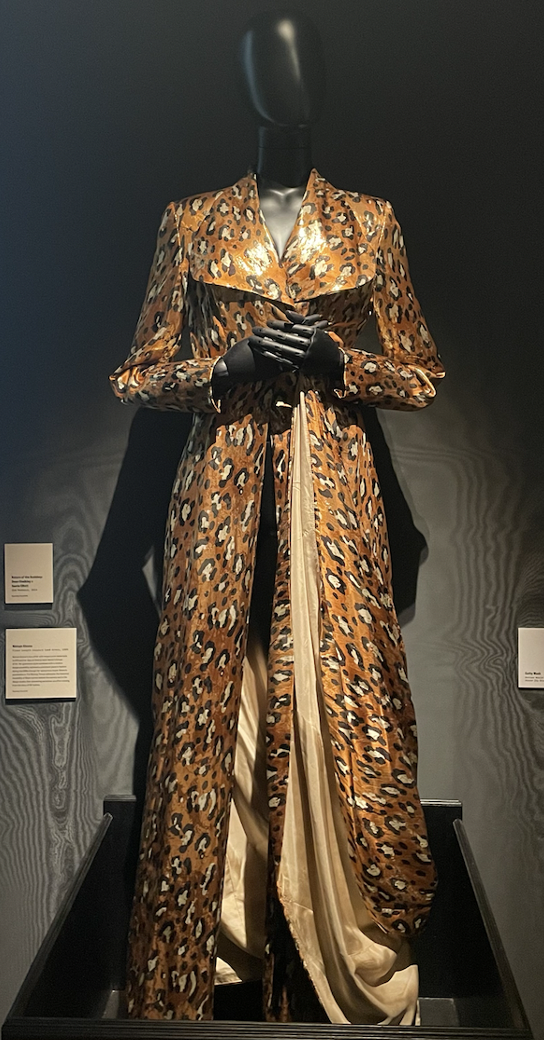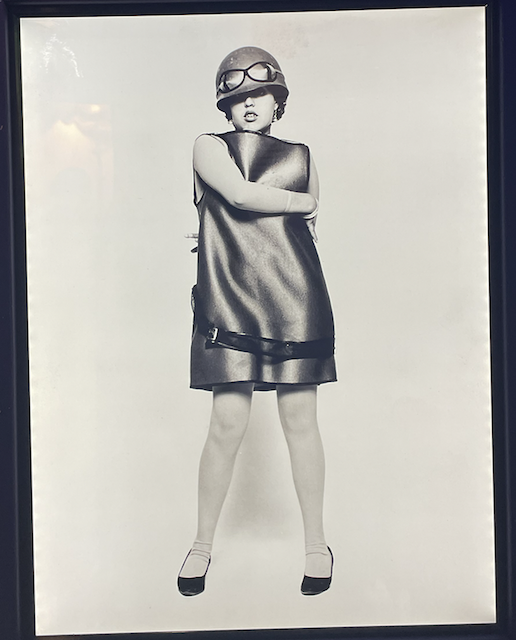The Missing Thread: Celebrating Black Creativity in British Fashion
Report by By Molly Bruce, Central Saint Martins Journalism MA
“Black art, Black creativity, and Black contributions have always been overlooked, stolen, and repurposed.”
The above quote by archivist and curator, Kerian Magloire, underpins a burning motivation for curators of The Missing Thread, to ‘interrogate the published version of events,’ and present Untold Stories of Black British Fashion. Harris Elliott, Andrew Ibi (also FACE cofounder), and Jason Jules, celebrate as well as centre the work of a generation of Black artists and designers such as Chris Ofili, Maud Sulter, Ozwald Boateng, Christine Checinska, Nicholas Daley and Martine Rose.
Covering the period from the 1970s to the present day, the project explores the dynamic landscape of Black British culture and its important input into the history of British design and culture. Rather than isolating fashion, the Black contribution to British fashion culture is set within the broader socio-political context, placing garments alongside artworks, cultural artefacts, music, memorabilia, videos, and installations to display how each is interlinked. Separated into four distinct themes: Home, Tailoring, Performance, and Nightlife - each room references the spaces that inspired and allowed the culture of Black British fashion and design to develop on its own terms.
Rather than isolating fashion, the Black contribution to British fashion culture is set within the broader socio-political context, placing garments alongside artworks, cultural artefacts, music, memorabilia, videos, and installations to display how each is interlinked.
Below are some of my standout moments featured at the exhibition:
The first room of the exhibition serves as a reminder of the anti-immigrant sentiment and racism that plagued Britain during the 1970s and 1980s. Birmingham artist, Pogus Caesar's images vividly capture police brutality and social chaos during the Handsworth Riots of 1985, a consequence of high unemployment and racial tension.
Pogus Caesar 1985
Plastered across one of the walls are newspaper features showing important racial milestones in Britain in contrast to the violence ever present in 1970 and 1980 Britain. One article celebrates Moira Stuart as the first Black newsreader on TV in 1981. In sobering contrast, another article reads “Mother Hears How 13 Died at a Party,” writing on the suspected racist attack on a London house party in 1981 that killed 13 Black teenagers.
The exhibition delves into tailoring - “an expertise and a craft, but also a statement of defiance and aspiration.”
In the second room, the exhibition delves into tailoring - “an expertise and a craft, but also a statement of defiance and aspiration.” As Black communities shaped and adjusted their own perspectives, both validating the self and celebrating difference, tailoring was used to fashion self-expression and freedom.
One glimmering floor-length leopard lamé dress showcases the skill of female designer, Ninivah Khomo. Khomo studied at Central Saint Martins in 1974. As quoted by British Vogue, Andrew Ibi says: “Connecting with Ninivah was a joy but learning that Maud Sulter (a Scottish artist and feminist activist of Ghanaian heritage) had studied fashion left me speculating about what might have been had the industry only embraced her.”
Ninivah Khomo, Floor length leopard lamé dress. 1986
Exploring how these fields have shaped and been shaped by the Black British experience.
The third room celebrates the cultural, social, and political influence of Black Britons in sports, music, television, and film. It explores how these fields have shaped and been shaped by the Black British experience. From the rise of Thatcherism emerged the first British iteration of modern street style, intrinsically linked to Black music and culture. Among the notable figures highlighted in this room is Poly Styrene. While she is well-known for being a pioneer of rock 'n' roll, her contribution to fashion is less recognised. Innovating the punk ethos, tailoring and performing her own non-conformist style and ultimately presenting a fashion image ahead of its time.
Photograph by Faloon Stuart, Poly Styrene, 1977
This exhibition highlights the importance of Black British talent in shaping how we perceive Britain today as well as being representative of a small selection of Black British creativity
There is much to digest and visitors should set aside time to complete all 5 rooms, as well as browse the stylish gift shop promoting Black businesses and authors.
This brings me to the later two rooms. Both are devoted to the vibrant contribution of the late Joe Casely-Hayford OBE (1956- 2019) whose career and talent inspired a host of contemporaries yet lacked establishment endorsement. Recent news of the appointment of the creative director, Seán McGirr, to Alexander McQueen, is a clear indication that the fashion industry still has a long way to go. This appointment firmly cements a line up of white male creative directors at the luxury fashion conglomerate Kering. This exhibition however highlights the importance of Black creativity specifically Black British talent in shaping how we perceive the cultural landscape today as well as being representative of a small selection of Black British creativity. This begs one final question: what would have happened to Casely Hayford had he been white?
Two rooms are devoted to the designs Joe Casely-Hayford OBE
The Missing Thread, Somerset House. The exhibition is open now until 7 January 2024 and curated by the Black Oriented Legacy Development Agency (BOLD) Harris Elliott, Andrew Ibi, and Jason Jules.
Unless credited, imagery is supplied by the writer






